Genocide Memorial Sites in Rwanda
Rwanda is a small land-locked country located in the eastern-central region of the black man’s continent. Rwanda is bordered by Congo in the west, Burundi in the south, Tanzania in the east, and Uganda in the North.
The assassination of President Juvenile Habyarimana is said to have been the catalyst to the 100-day genocide in 1994 Rwanda. It is said to have started with the Hutu soldiers, police, and militia who murdered the key Tutsi and some Hutu military Leaders.
However, this disastrous event had its origin from the past days of colonial rule when the Belgians created racism, discrimination, and hatred among the Tutsi, Hutu, and Twa ethnic groups. Later the stiffening of these identities in both social and political power laid the foundation for genocide violence.
The genocide is also said to have begun as a civil war between the government armed forces and the Rwanda Patriotic Front led by the Tutsi exiles in Uganda in 1990. This later brought in propaganda that the Tutsi were dangerous deserters which later saw the president ‘s plane shot hence the massacre of innocent nationals. More than 800,000 Tutsi and a medium number r of Hutus were massacred but up to now, the United Nations Keeping Force is blamed for failure to intervene and stop the violence.
During this time of massive torture and violence, both the Hutu and Tutsi women and children were victims of sexual violence. This led to widespread of HIV / AIDS in Rwanda. The Hutu women experienced more violence from both the Hutu parallel and the Tutsi who were led by RPF that were trying to end the genocide.
After the genocide, the Rwandan government has put up many steps to pursue recovery and reconciliation, and several memorial sites to lay to proper rest of all the bodies of people who lost their lives in this terrible happening. Below are some of the memorial sites that you can visit to know the dark part of this country.
The Kigali Genocide Memorial Center (Gisozi).
This is one of the places that was set up in commemoration of the people who lost their lives in the 1994 Rwanda genocide. This genocide memorial site is in Kigali after a ten-minute drive from the city center. This memorial center was established by the Aegis Trust in 2004 after being requested by the Rwandan authorities. This memorial site comprises of more than 250,000 bodies of victims and other human remains that had been left lying over the city streets and those that had been thrown in the river.
The center has three permanent exhibitions of which the largest has documents about the genocide in 1994. There’s a children’s memorial, their photos, toys, and their last words expressing the way they were killed.
The genocide memorial comprises exhibitions, memorial gardens, education services, and the genocide archive.it is an international site that receives thousands of visitors including students, politicians, researchers, and international travelers.
The commission of Rwanda developed this center to benefit the masses, survivors, and young people and act as an educational tool for the next generation.
Murambi genocide Memorial.
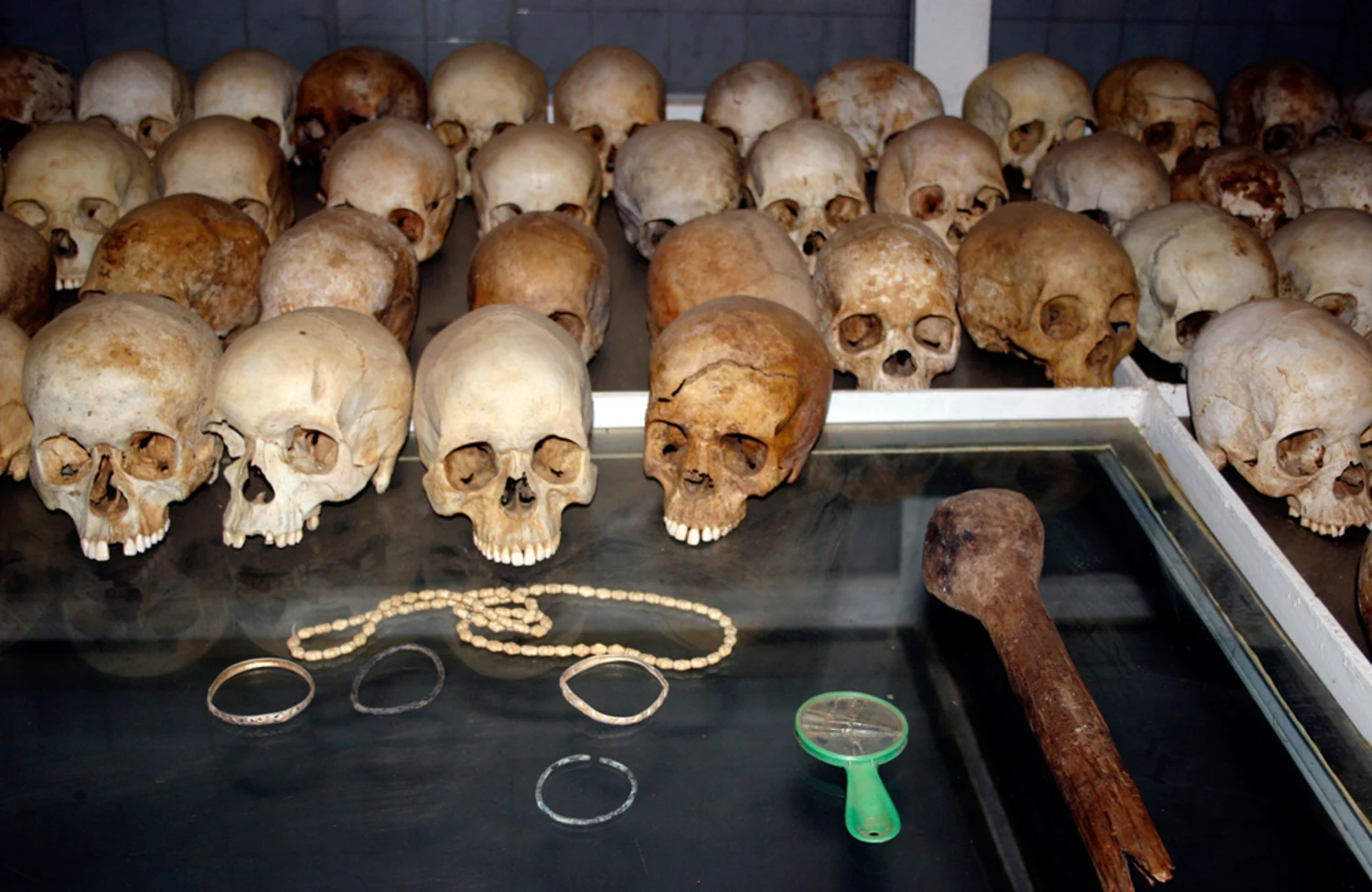
Murambi genocide Memorial
The Murambi genocide memorial site is found in Murambi village in the Namagabe district in the southern province of Rwanda. It is 126 km from Kigali city center. This place is a great test of visit as the bones of the genocide victims can be viewed, and in some instances, one can easily identify a friend’s body. The Tutsis who were murdered in this place had sought refuge in a technical school hoping to get help from the French soldiers. To their disappointment, it was a trap, they had no food for survival and were later attacked and killed by the militia. They were buried in massive graves as viewed the site and the former classrooms are used as exhibition rooms.
At this memorial site, hundreds of bodies have been brought out of the ground and preserved with lime and appear as they were at the time they were killed.
When you visit this genocide memorial site, you are well presented with information about the genocide in a museum on panels and shot films. Take a walk through the rooms with photos of the victims and testimonials of some survivors.
As you move out of the museum, pass by some mass graves and then to the planned classrooms where many bodies were laid and preserved. The last rooms contain the children and babies giving the expression of their last moments. Some of them have fractures on their skulls from machetes of merciless killers.
As you leave the classroom section, find panels having names of most of the victims who innocently lost their lives.
From all the descriptions or a glance at this place, you feel the situation was so embarrassing that could never happen again.
Nyamata Genocide Memorial
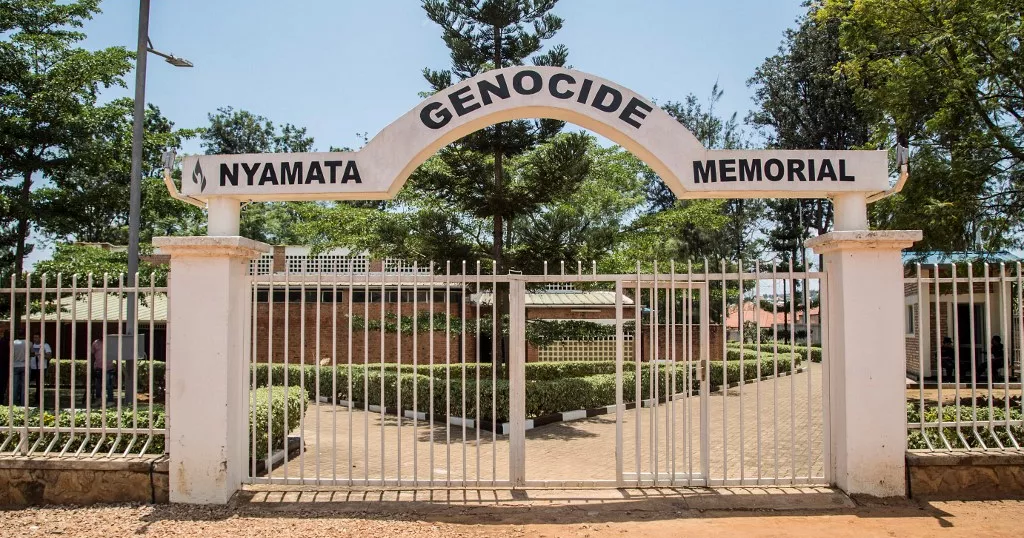
Genocide Memorial Sites in Rwanda
The Nyamata genocide memorial is symbolic of the harsh treatment of Rwandan women and children in1994. The place is in Bugesera region, 36 km from Kigali city.
This place is one of the dark spots of the genocide where over 2500 people were tortured, mistreated, and killed. Many of them were raped and the spread of HIV became so rampant.
In the early time of the genocide, many people fled to this church to seek refuge as they did not expect any attacks on worship places. Unfortunately, things turned off from their expectations because the militias attacked and killed almost all the people in the church.
On 10/4/1994, the Hutu killers broke the door with hammers and killed people with riffles, machetes, and grenades. More than1000 people lost their lives that day.
The victims of the incident were buried in two massive graves outside the church and their clothes were pilled inlining on the seats of the church. The church walls and floor are still covered with blood stains.
Currently, the government of Rwanda and the survivors have provided more information about the genocide in this place. Masses are no longer held in this place. The place is visited by locals, and international tourists to learn more, remember, and know the history of the great massacre.
The area suffered the worst moments of the 100-day genocide.
Ntarama Genocide memorial.
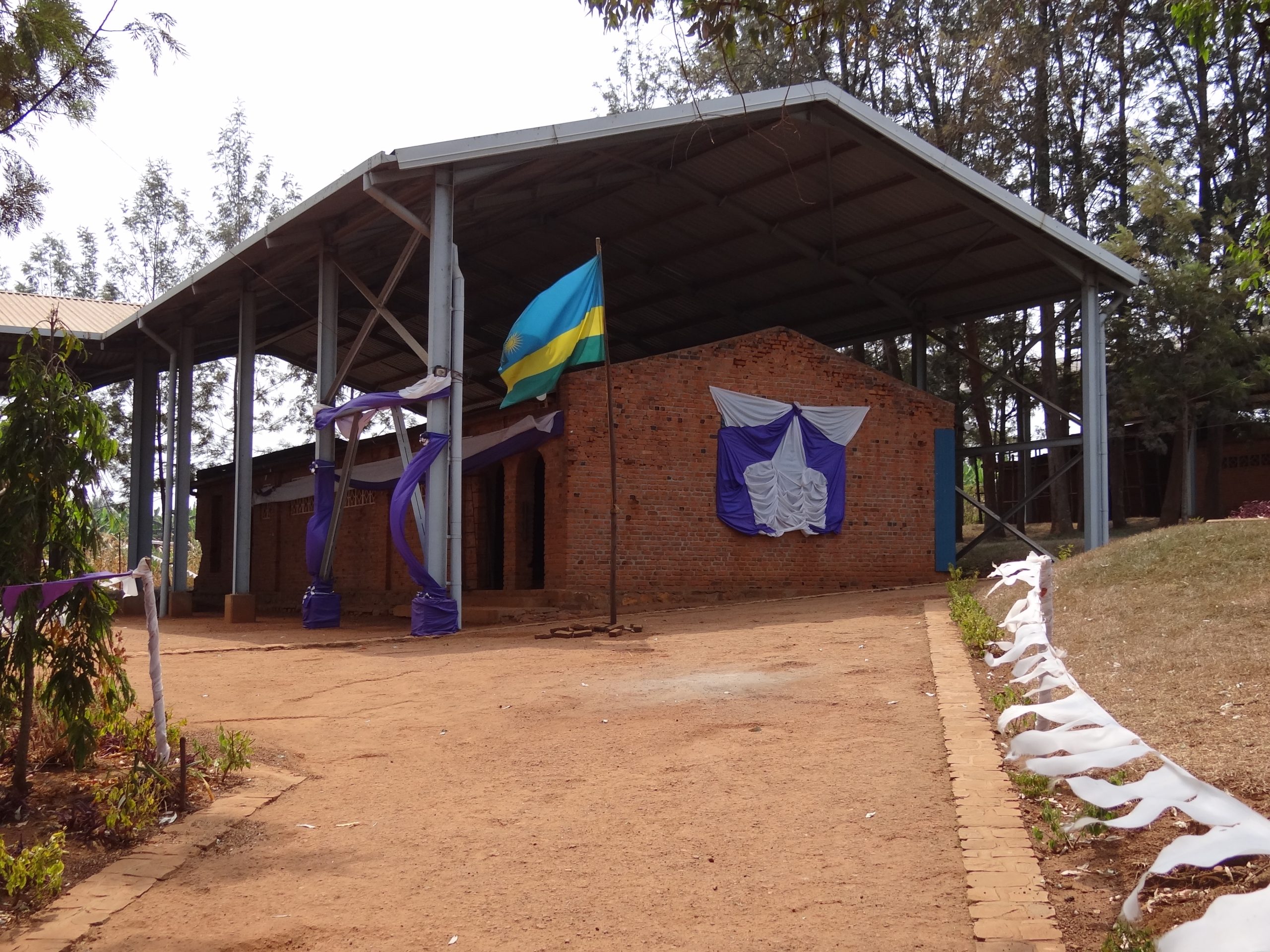
Ntarama Genocide memorial
This is one of the six memorial sites that was recognized for the remembrance of the genocide victims. Ntarama is located in one hour drive south of Kigali City. In this place was a small catholic church where many Tutsis sought safety during the genocide error. The place was so isolated, but the Hutu militias did not forgive these people. They picked brick by brick until they reached inside the church and killed an estimated number of 5000 people. They acted evilly without fearing that this was a place of worship.
Nyanza Genocide Memorial
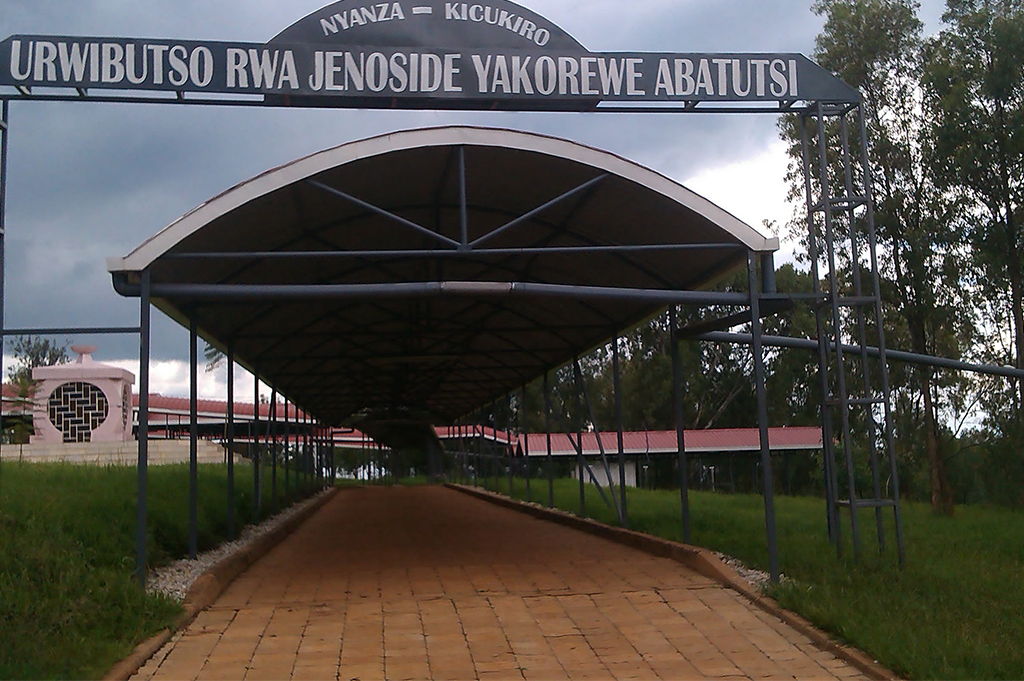
Nyanza Genocide Memorial
When the 1994 genocide had just started, many Tutsis sought refuge at Echole Technical Officielle, a school on the edge of Kigali town hoping for protection from the United Nations keeping force. To their surprise, the UN forces left the place, and the deserted refugees were pushed out and murdered near a garbage dumping place in Nyanza. Over 1000 people were murdered in this place.
Bisesero genocide memorial site.
The Bisesero genocide memorial site is on a small hill called Bisesero, about 60km from Kigali along Kibuye road.
The 1994 Rwanda genocide is said to have been sparked off by the assassination of President Juvenal Habyarimana. Over one million people are said to have lost their lives after great torture and sexual harassment.
In May 1994, many people who had sought refuge in the hills of Bisesero, unlike other groups of people, the people in this area had offered some defence to the French Peacekeeping troops but when they lacked resources, resistance was organised against them and more than 4000 people were left dead.
This memorial center is one of the six centers that were set up to commemorate the lives of all victims of the 1994 genocide.
Nyarubuye Genocide Memorial
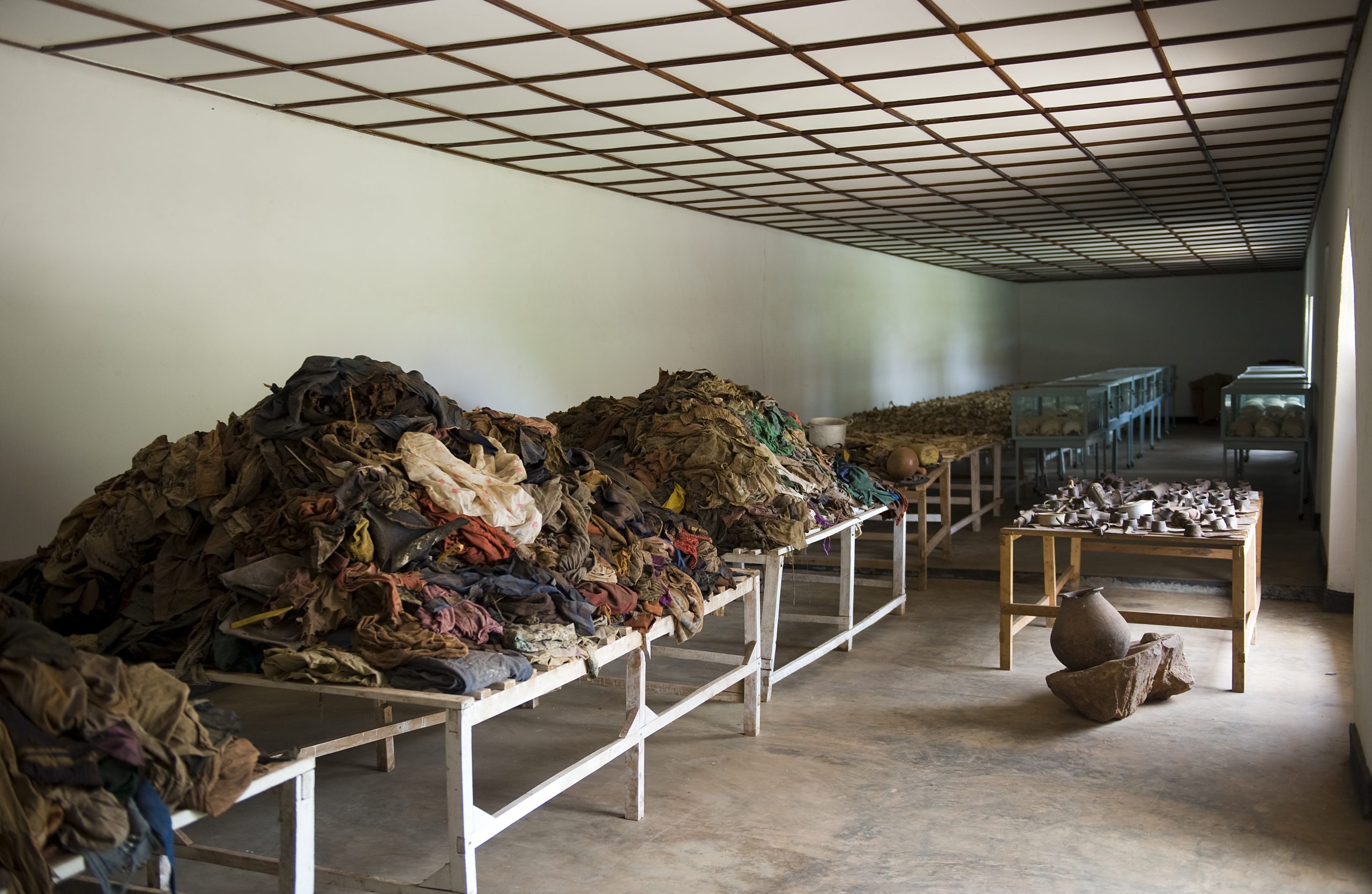
Nyarubuye Genocide Memorial
Is a genocide memorial site located 140 km east of Kigali town near Kibungo town in Kirehe district. More than 2000 people were killed at this place as they were trying to escape to Tanzania. This place was a convent for Catholic nuns. Currently, the convent is a memorial site and houses the clothes and shoes of the victims and the school has now been renovated to be used by the local community.
